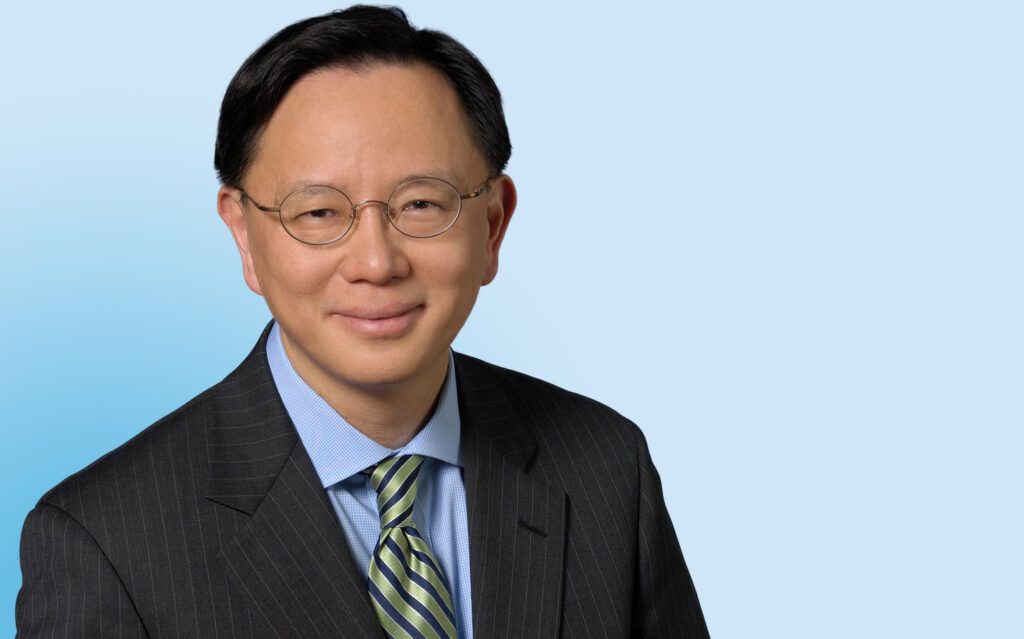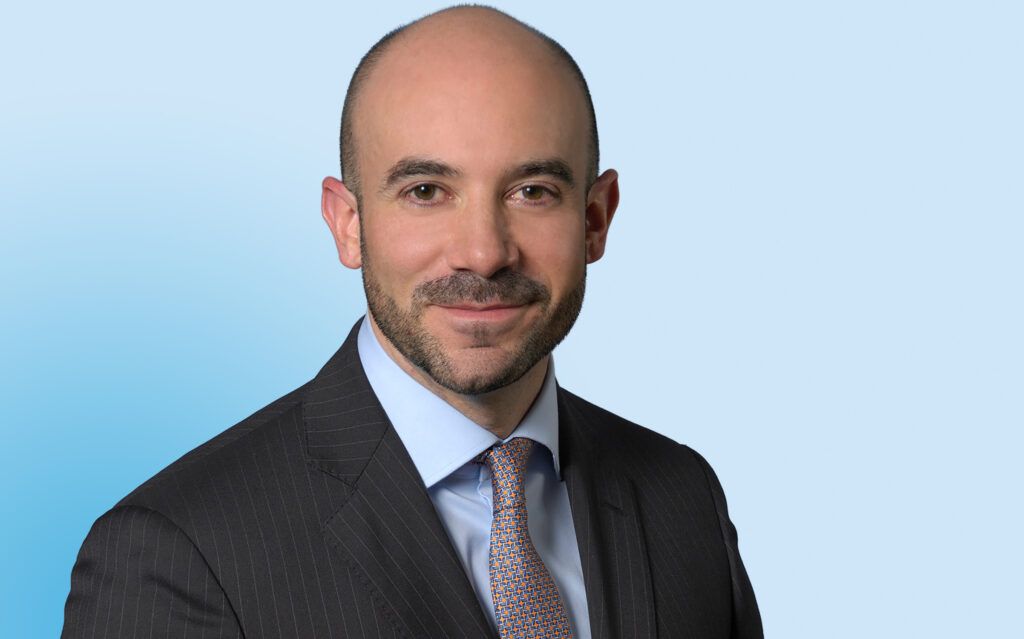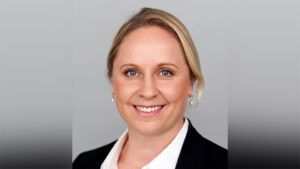George Dai is chief investment officer at Weatherbie Capital, a subsidiary of Alger. Josh Bennett is the firm’s chief operating officer. Dai and Bennett manage the Alger Weatherbie Enduring Growth Fund, a mutual fund that launched in December.
Dai and Bennett spoke to ESG Clarity about how they approach ESG, how to interpret ratings, and what some of the nuances are for smaller companies and certain sectors, such as healthcare. This interview has been edited.

Tell us about yourselves and Weatherbie Capital.
Dai:
We are growth investors. The whole Alger organization is a growth organization. And Weatherbie Capital is a wholly owned subsidiary of Alger, based in Boston. We are specialists in the mid- to small-cap growth space.
Our previous mandate was growth and quality. And now with this new product we have added the third leg to it — ESG. It’s equally important.

Bennett:
We do our own research, our own portfolio management, our own trading in Boston — the same way we’ve done it for 25 years. All we do is small- and mid-cap growth investing.
The CFA Institute has a certificate in ESG investing. [For] our entire investment team in Boston, six people have all studied for that, taken the exam and passed. So the entire Weatherbie Capital investment team is, now you could say, ESG-certified, by that standard.
When do you decide to divest, and how you engage with companies?
Dai:
We actively engage with all the companies whose ESG score are above 25. We use Sustainalytics as our rating agency. The higher the number, the worse.
ESG is one of the three mandates, so it is not the only thing.
For this particular product, which has stringent ESG metrics, we don’t invest in companies with scores above 40. Sustainalytics has five categories, five buckets — anything above 40 is kind of the worst bucket.
But we don’t mind investing in something like with a 35 score. And in fact, a lot of the healthcare companies do have scores in the 30s, even 40s. Now, does that mean that these companies are bad companies? Actually not.
We can help these companies become better … and as a result, they in turn really benefit society. We don’t go in with a negative screen.
We want to recognize that the world has many elements, has many angles — the grayness has different shades.
Bennett:
It’s an active ESG mindset, the same way we are active fundamental investors. So that means engaging with our companies. And if a company has a score that’s slightly above average, say it’s a high 20s or low 30s, we’re going to meet with that company, talk about what’s the opportunity for improvement, the willingness to improve and the likelihood that they can make that improvement.
We want to see an ESG trajectory where, three years from now, five years from now, you’re going to see a better ESG score.
When would we divest?
If we have a company in Enduring Growth that we think has a certain positive ESG trajectory to it, and a year later, or two years later, we’re still meeting with a company and they’re just not willing to make any sort of progress or movement … We’re going to let them know this is becoming less favorable. You’ll see that position come down in the portfolio. And eventually, because we have a constant flow of new ideas, we will replace that idea with a company that we think has a better ESG trajectory.
How can healthcare improve on ESG as a sector?
Dai:
I’m a scientist by training. I really have a heart for innovation, because that’s how the human race advances. That’s how Covid is being controlled and managed. In our ESG effort, we noticed that the healthcare industry does have, across the board, poorer scores than a lot of the other industries.
So we dig deeper into the reports of the rating agencies. A few things stand out. One is the product recalls, which is viewed negatively by the methodology. The second is intellectual property disputes, which is also viewed negatively. They consider that risk. And number three is a high price … That’s a whole can of worms, which we can spend 10 hours discussing. But on the other two, I personally do have a view that resulted in a few dialogs with our rating agency.
For example, on the product recalls … sometimes a drug company does have the choice of recalling or not recalling. And if they volunteer to recall, that’s a lot of work [and] financial damage to the companies. But why do they do that? It’s because they act out of their corporate responsibility. They have their conscience, and they are willing to sacrifice financial gains for the benefit of the patient’s health.
The other aspect is the intellectual property disputes.
The healthcare industry invests so much in R&D, [and the same research is] happening, almost at the same time in different companies. And so that’s why company A may have a dispute with company B, and it may have a dispute with company C.
This is just a norm of the industry. And that’s why there is a patent system in the United States to protect the intellectual property, so that there is an incentive system.
That’s why in countries with weak intellectual property protection, you don’t see innovation.
Bennett:
[Ratings agencies] are not accounting for the fact that many of these healthcare companies are actually doing great good for society.
The other piece is that smaller cap companies that have less resources to dedicate to ESG are also being penalized by the system, because they don’t know how to play the game yet. There’s this whole greenwash game going on.
When George and I engage with companies, we’re engaging with the general counsel of the company. It could be somebody who works closely with the CFO of the company, but there isn’t yet an ESG team at most of these companies. They’re not even aware of the difference, for example, between a Sustainalytics rating and an MSCI rating, let alone the 12 others that they could be looking at. So we’re helping to educate them on the kind of landscape and trying to counter some of the tilt away from these companies.
When you feel like the rating methodology is unfair for healthcare, do you give companies flexibility if their score is worse? How much of your own ESG research do you do?
Dai:
We don’t really change the number, because that number is the number, and we don’t want to be the player and the judge ourselves.
One of my medical device companies received a poor score — zero — on a reporting sub-metric.
When we talked to the general counsel of this medical device company, he said, ‘My team has communicated with this rating agency three times. And we have sent them the report three times.’
In this case, we actually raised our voice to the rating agency on behalf of this company.
Bennett:
What we do internally is put our own score on the company [for] how aware are they of ESG issues and why they’re rated as they are.
How likely are they to change and take action? Are they taking action now? Do they have a committee formed? So awareness, probability and then magnitude of potential change. Is this company already in a pretty good place? In which case, the magnitude may not be huge in terms of the potential change, but maybe this company has a really poor score, and we know that with some work and with some focus, you could really move the score. We’re looking at each of our companies and putting our own kind of internal rating.
[One] industrial supplier had a zero score out of 100 on mentorship programs.
Some of it was helping educate the company so that they can get out there. And I encouraged them to make a webpage dedicated to ESG. I said, ‘Use the same language that the rating agencies are using.’ [You] almost have to spoon-feed the rating agencies with the data that they’re looking for so that they are aware of what you’re already doing. At a bare minimum, get the credit for what you’re doing. But better than that, let’s talk about ways that you can move beyond what you’re already doing to become a better actor in society.
Some of the top holdings in the fund are waste companies. Tell us about those.
Bennett:
A lot of people are surprised to see that we own waste companies.
The companies that we own are Waste Connections and Casella Waste Systems, which are two of our top companies. They’re two of the leading players in taking the waste that we create, whether we like it or not, as a society.
They have the capital to invest in the sort of cap expend that can manage the waste better. For example, both companies are investing in collection vehicles that don’t use diesel.
Both companies are capturing the gas and the waste that come out of landfills. And they’re finding ways to reuse that, to power the facilities that manage the waste.
I would rather see more of our waste as a society in the hands of companies like Waste Connections and Casella Waste, who are doing this properly.
How do you look at net zero commitments?
Dai:
Net zero is basically carbon neutral by 2050. We only have 28 years left right now. We in the developed countries are reducing our carbon footprint. But in developing countries, there is a geopolitical conflict here. [They say], ‘You guys polluted the earth for the last 100 years. We didn’t do much pollution. Now, you want us to be on the good side, so that’s going to restrict our development.’
If you look at certain countries like China, its pollution will peak in 2030. I mean, that’s their obligation or their commitment. In other words, we are going to see developing countries like China, India continue to throw more emissions to the world.
[Net zero] is a noble goal. We all want to be there. There is so much needed to be done at the country level.
Bennett:
It’s not a level playing field. Based on the industry that you’re in, your ability to get to net zero can be radically different.
Compare [an office] to an industrial company that depends on resources coming from mines. The Scope 3 is so broad.
What we want to see is each of our companies over the next few years developing a plan by which they will get kind of toward that direction. We want to see them making hard commitments, putting stakes in the ground, but it doesn’t behoove them to be early on that train.








